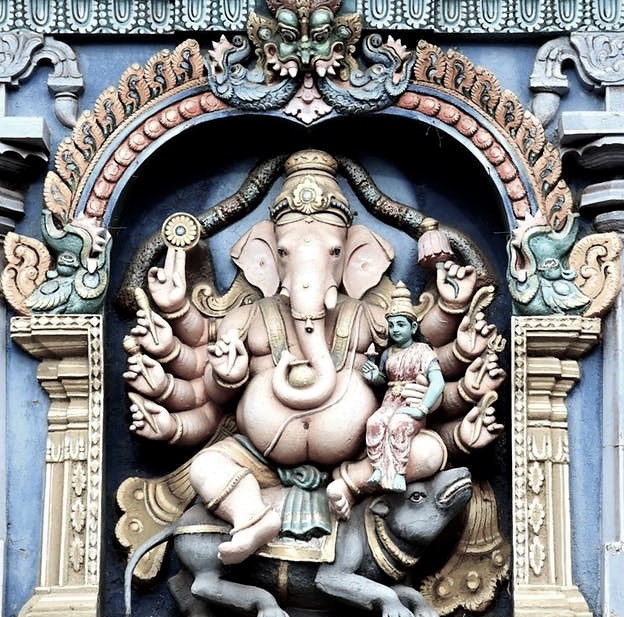- Special FeaturesFoundation Year1974Sthala TreeTheerthamRathamArchitectureVesara StyleOther SpecialityThis temple was considered as the biggest temple in India and second largest in the world, before the Akshardham Temple was created in 2005 in Delhi.
- Sthala Puran
As per the puranas, there was a sage name Katyaya who after meditation and rigorous penance was granted the boon to be the father of Maa Durga, whom he prayed to Goddess Durga was sent to earth by the Trideva: Brahma, Vishnu and Mahesh to be born as Katyaya's daughter Katyayani. The temple was founded by Baba Sant Nagpal Ji who was born in Karnataka. He lost his mother at a very young age and it was during her cremation, did an unknown lady che and give him shelter who called herself as the mother of the universe and took him under her wing.
- Architecture
This temple is totally constructed from marble. The entire temple complex is spread over 60 acres and has over 20 small and large temples divided in three different complexes The Chattarpur Mandir is spread over 70 acres of sprawling greens and comprises over 20 small and large temples which are divided into three different complexes. Several other temples devoted include the Shre Mandir, Ram Mandir, Maa Katyayani Mandir, Maa Mahishasur Mardini Mandir, Maa Ashtabhuja Mandir, Hanuman Mandir, Laxmi Vinayak Mandir, Jharpeer Mandir, Markandeya Mandapam, Baba Ki Samadhi, Nageshwar Mandir, the Trident (Trishul), 101 feet high Hanuman Murti which form the special attractions of the place. There is also a museum devoted to the late saint which is a tourist attraction. The stunning white marble architecture with serene surroundings makes the Chattarpur Mandir all the more divine and admirable.
- Alankar of Deity
- Prayers and BenefitsSpecial Vratas and PrayersOfferings to DeityStotras and Mantras
- FestivalsNavratriBoth the Vasant Chaitra Navratras (New year of the Hindu Calendar) in March/April which is celebrated on the occasion of the birthday lord Rama and the Sharad Navratras, coinciding with Durga Pooja, are celebrated in September/October that culminates into Vijay Dasami when Shri Rama along with Sita and Lakshmana returned to Ayodhya after completion of 14 years exile, are celebrated with pomp and glory! inside the temple premises. The mandir is open round the clock during Navratras.MahashivratriCelebrated every year in the temple on the 14th day of the Hindu month of Fagun (February-March) as the marriage day of Lord Shiva and Maa ParvathiKrishna JanmashtamiIt is celebrated on the Bhadrapad Ashtami (8th day) of the Hindu month of Bhadon (August September). At midnight, Vishnu Sahasranam is recited in the temple followed by aarti, and prasad distribution.Guru PurimaGuru Purnima in August every year. A procession is carried out which starts around 10.00 am from Shree Shiv Shakti Mandir, Kilokan village, which after traveling a distance of 20 km terminates around 2 pm at Babaji's Samadhi in the main temple complex at ChhattarpurBabaji's BirthdayThe day is celebrated on the full moon day in February/March i.e. in the Hindu month of Fagun. All the devotees play Holl at the Markandeya Hall which is followed by lunch. Cultural and religious programs are also held during the day.Babaji's Nirvan DiwasBabaj attained Samadhi on 15th December 1998, The Samadhi is decorated with flowers and illuminated with lights on the day. Abhishek of Babaji's statue is perfomed. Bhajans Free lungar (food, fruits etc) is arranged for all the invited saints.
- Sodasha Upcharas
- PrasadhasThe lungar which is served on special occasions of the two Navratras, Janmashtami and Mahashivaratri to the devotees, is one of the largest in the world with approximately 1 lakh devotees joining in every year.
- Social ActivitiesAnnadhanMarriageEar BoringHead ShaveDanaasEducation FacilitiesSocial DrivesOther Activities
- Arjita Seva
- Tags

